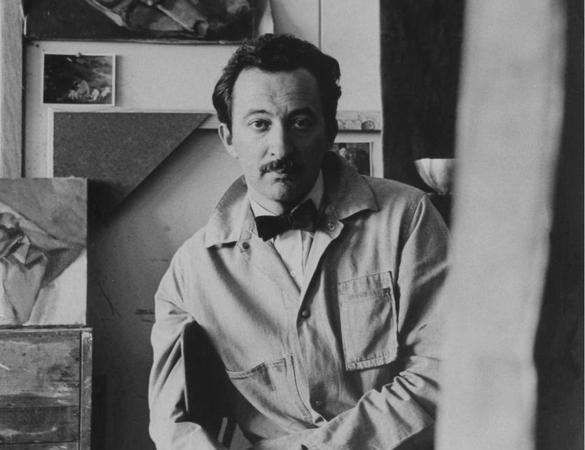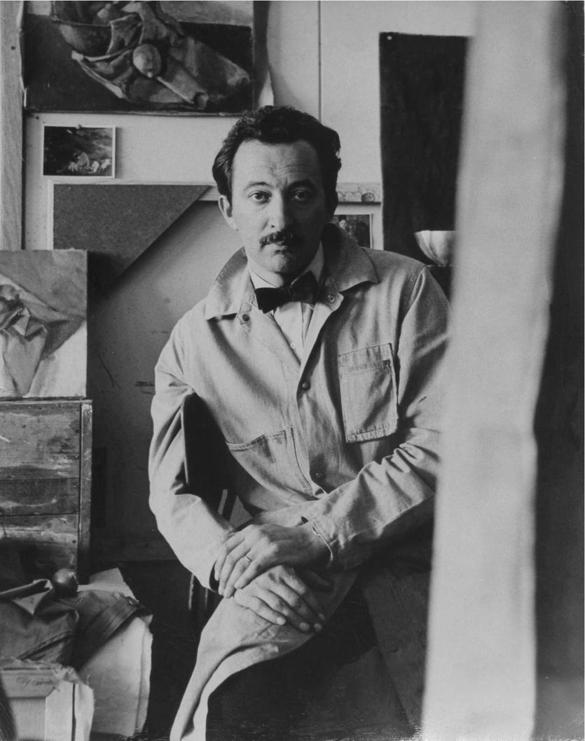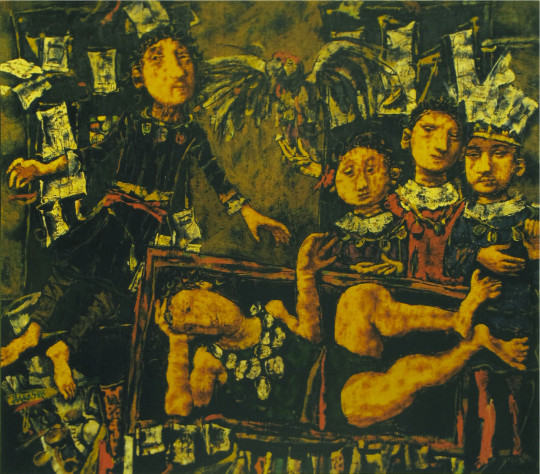People
David Aronson, Founder of Boston University’s Visual Arts Program, Dies at 91


Sarah Cascone


David Aronson (1956).
Photo: Courtesy Braithwaite & Katz Communications.
Artist David Aronson, a leading Boston Expressionist who founded the visual arts program at Boston University, died last week at 91.
Aronson was born in Lithuania in 1923 before immigrating to Boston at age seven, according to local NPR affiliate WBUR. There, he attended the School of the Museum of Fine Arts, Boston, where he studied under Boston Expressionist Karl Zerbe.
Later, Aronson began teaching at the school, where he met his wife, Georgiana Nyman Aroson, who was a student in one of his classes. The couple has three children, including Ben Aronson, who is also a painter.

David Aronson, The Golem (1958).
Photo: Courtesy of David Aronson’s website.
An early breakthrough for the artist came when his work was included in “Fourteen Americans” at New York’s Museum of Modern Art in 1946.
In 1955, Aronson became the first head of the visual arts department at Boston University, now know as the College of Fine Arts. He also founded the Boston University Art Gallery.
“He had a profound influence on Boston art,” Katherine French, the director emerita of Danforth Art in Framingham, Massachusetts, told the Boston Globe. French curated the museum’s 2009 exhibition “David Aronson: The Paradox.”
At Boston University, Aronson bucked the trends by hiring figurative artists and adding an anatomy requirement at a time when abstract work was dominating the art world.
“Aronson dissented from the concept of art history that it only moves in one direction,” his former teaching assistant Bruce Herman, now the art department chair at Gordon College in Wenham, Massachusetts, told the Globe. “And of course, he was right.”

A photo promoting the visual arts program at Boston University.
Photo: Courtesy of Boston University.
In his artwork, Aronson explored moral, spiritual, and mystical themes, grappling with his Orthodox Jewish upbringing by incorporating religious imagery from both the Old and New Testaments.
The Metropolitan Museum of Art, New York; the Art Institute of Chicago, and the Museum of Fine Arts, Boston, are among the institutions that include Aronson’s work in their collections.
Aronson is survived by his wife, children, grandchildren, and a great-grandchild.